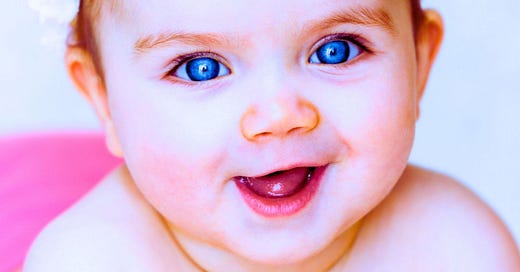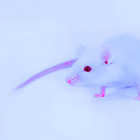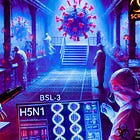Gov't Pandemic Policies Damaged Infant Brains So Children No Longer Recognize Happy Faces: Journal 'Developmental Cognitive Neuroscience'
"Post-pandemic children have a reduced familiarity or attention towards happy facial expressions," scientists write in new study.
A peer-reviewed study published in the April issue of Developmental Cognitive Neuroscience has confirmed that government-imposed COVID-19 policies—including lockdowns, daycare closures, social distancing, and face masks—disrupted brain development in children, impairing their ability to recognize emotional expressions, especially happy faces.
The findings raise questions about whether the government should have the power to impose sweeping behavioral mandates.
The paper’s conclusions mirror the findings of the Congressional COVID Select Subcommittee, which determined that pandemic-era policies were not only unsupported by solid science, but also deeply harmful—especially to children.
The subcommittee reported that the “6 feet apart” social distancing rule was arbitrary and “sort of just appeared,” according to Dr. Anthony Fauci’s own testimony.
Mask mandates were enforced without conclusive evidence of effectiveness, and lockdowns caused “immeasurable harm” to mental, physical, and economic well-being—disproportionately impacting America’s youth.
The title of the new study says it all: “The effects of Covid-19 related policies on neurocognitive face processing in the first four years of life.”
Follow us on Instagram @realjonfleetwood & Twitter/X @JonMFleetwood.
If you value this reporting, consider upgrading to a paid subscription.
For advertising & sponsorship opportunities reaching 230,000+ monthly viewers, contact us by clicking below.
Researchers at Utrecht University in the Netherlands found that children exposed to these policies during infancy and early childhood failed to neurocognitively differentiate between happy and fearful facial expressions—a basic developmental milestone critical for normal emotional and social functioning.
“During-pandemic children did not neurocognitively differentiate between happy and fearful expressions,” the authors write. “This effect was primarily attributed to a reduced amplitude in response to happy faces.”
The team used EEG technology to monitor Event-Related Potentials (ERPs), a standard neuroscientific method for studying brain responses to stimuli.
They analyzed three age groups: 5-month-olds, 10-month-olds, and 3-year-olds—comparing results from children tested before COVID restrictions (N = 462) to those tested during the restrictions (N = 473).
Babies Exposed to Lockdowns Show Flattened Brain Activity Toward Joy
Children tested before the pandemic showed clear neural differences between emotional expressions.
Those tested during the pandemic, however, did not.
“In the during-Covid group mean activity did not differ significantly between happy and fearful faces,” the authors report. “This suggests that post-pandemic children have a reduced familiarity or attention towards happy facial expressions.”
In 3-year-olds, the impact was particularly clear.
The researchers write:
“There was once again no differential brain activity between happy and fearful expressions in children tested during the policies, attributed again to a reduced amplitude in response to happy expressions.”
Face Categorization Remained Stable—but Emotion Recognition Collapsed
The study found no significant change in children’s ability to tell a face from a house (face categorization).
However, the ability to recognize emotional expressions—specifically happiness—was clearly impaired.
“There were substantial effects on emotional face processing... there was a reduced neurocognitive differentiation between emotions in children tested during versus before the policies,” the researchers found. “This effect was primarily attributed to a reduced amplitude in response to happy faces.”
The study attributes this collapse in emotion recognition to reduced input—less interaction with a variety of faces and fewer observable emotional expressions due to social isolation and widespread masking.
“The Covid-19 related policies resulted in a reduced variety of facial input,” write the authors. “Given the psychological effects of the Covid-19 related policies... we could assume that those actors showed fewer happy facial expressions.”
“Hence, a reduced amplitude in the later ERP components may indicate reduced attention and/or reduced familiarity with happy facial expressions due to reduced experience.”
‘Subtle’ Policy Shifts, Measurable Brain Damage
The authors caution that their findings, while subtle on paper, are neurologically significant:
“The current study extends the literature by demonstrating for the first time, in a large sample of young children, that rather subtle differences in input have a discernible impact on emotional face processing.”
This undermines the narrative that young children were largely unaffected by COVID-era policies.
On the contrary, the study confirms that policy—not the virus—altered the architecture of the developing brain.
No Recovery Window Guaranteed
And while infants are often described as resilient, the data suggest there may be a critical window for face-processing development around 3 years old, meaning these deficits may not simply “bounce back.”
“The current findings reveal in a large sample that input is crucial around three years of age,” the authors write.
This raises serious questions for public health officials and educators: What are the long-term consequences of blunting children’s exposure to faces during critical stages of development?
And how will these impairments affect their emotional regulation, empathy, and social cognition?
The answers remain unknown—but the damage is now measurable.
“This suggests that a reduced variety of social input negatively affects emotional face processing in both infants and 3-year-olds,” the authors conclude.
As evidence mounts of lasting neurological harm from unscientific COVID-era mandates—and with governments already funding gain-of-function research and next-gen vaccines for H5N1—this study should serve as a dire warning: if an orchestrated bird flu pandemic follows the same playbook, another generation of children may suffer irreversible damage.
Who will be held accountable for the irreversible neurological harm inflicted on an entire generation of children by unproven, government-imposed COVID-19 policies?
Follow us on Instagram @realjonfleetwood & Twitter/X @JonMFleetwood.
If you value this reporting, consider upgrading to a paid subscription.
For advertising & sponsorship opportunities reaching 230,000+ monthly viewers, contact us by clicking below.











It was the plan, all along, right?
Thank you for the article: Also, I have recognized people who have taken the weapon, no longer appreciate happiness or can tolerate joyful situations. They focus on the negative. When someone is joking or with joy, these individuals tend to ignore the fun, or their response is to create an unrest, hatefulness and discontentment. Often, they will change the subject to one of ugliness. They are dry, non-responsive or without humor.
Blessings ~